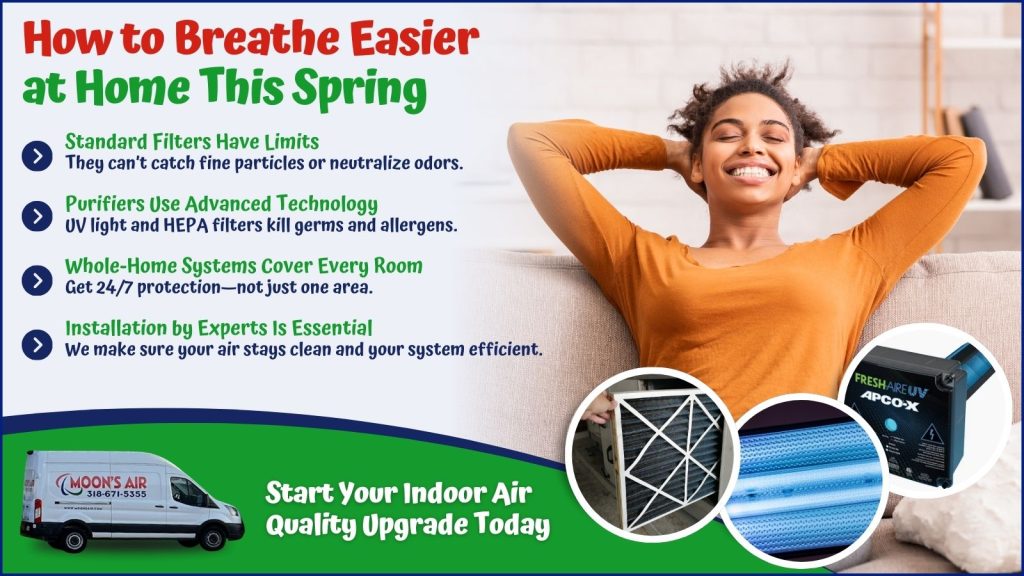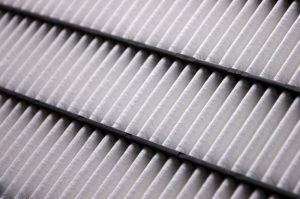When it comes to keeping your home’s air clean and healthy, many homeowners assume their HVAC system’s basic air filter is doing all the heavy lifting. While these filters do play an important role in protecting your HVAC equipment from dust and debris, they’re not designed to eliminate many of the particles and contaminants that can affect your health. That’s where whole-house air purifiers and filtration systems come in.
But what’s the difference between an air filter and an air purifier—and which one do you need? Here are some details on how to improve your indoor air quality in Shreveport, LA.

Air Filters: The First Line of Defense
Every central HVAC system has some form of air filter. These are typically located in the return air duct and are meant to trap larger airborne particles like dust, pet hair, and lint before they reach the HVAC unit’s internal components. Standard filters have a low MERV (Minimum Efficiency Reporting Value) rating and aren’t capable of capturing the smaller pollutants that affect indoor air quality, like bacteria, smoke, and allergens.
Even upgraded filters with higher MERV ratings may struggle to remove microscopic particles or odors—and installing filters that are too restrictive can even reduce airflow and put unnecessary strain on your HVAC system if not properly matched to your equipment.
Air Purifiers: Going Beyond Basic Filtration
Air purifiers are more advanced systems designed to remove a wider range of airborne contaminants. Whole-house air purifiers are professionally installed as part of your HVAC system and use additional technology to clean the air. This may include:
- HEPA filters, which capture fine particles like pollen, mold spores, and smoke.
- Activated carbon filters, which absorb odors and chemicals.
- UV light purification, which neutralizes bacteria, viruses, and mold using ultraviolet light.
Unlike standard filters, air purifiers work continuously to improve the quality of the air you breathe throughout your entire home.
Why You May Need Both
While air filters and purifiers serve different functions, they can work together to create a much healthier home environment. A high-quality whole-house filtration system can catch dust and allergens before they circulate, while a purifier tackles the contaminants that filters can’t catch—like volatile organic compounds (VOCs), pathogens, and fine particulates.
This dual-layer approach is particularly beneficial for households with allergy sufferers, asthma, pets, or anyone concerned about indoor air pollution.
Professional Installation Matters
To get the best results, it’s important to have a whole-house filtration or purification system installed by a qualified HVAC professional. We’ll assess your home’s existing HVAC setup, recommend compatible solutions, and ensure that your system is properly integrated without affecting airflow or efficiency.
DIY solutions or plug-in purifiers may offer some localized benefits, but they can’t compete with the power and effectiveness of a professionally installed system that treats all the air in your home.
Breathe Easier at Home
Improving your home’s air quality doesn’t have to be complicated—but it does require the right solutions. Whether you’re looking to reduce allergens, remove odors, or protect your family from airborne contaminants, a whole-house filtration or purification system can make a noticeable difference. We’d love to talk with you about your options and schedule a professional installation. Let’s help you breathe easier—every day.
Contact us today to discuss any of your HVAC needs.










